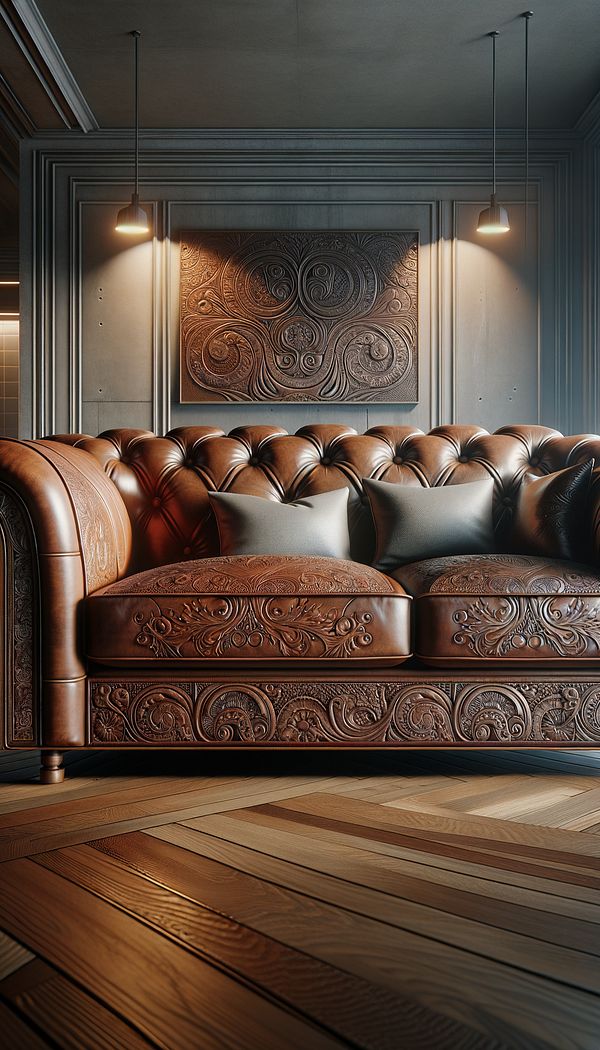What is Embossing?
Embossing is a decorative technique where a design is created on a surface so that it stands out in relief.
Description
Embossing is a fascinating decorative technique that adds texture and dimensionality to various surfaces by creating raised patterns or motifs. This technique can be applied to a wide range of materials, including paper, leather, metal, and textiles, making it versatile in the realm of interior design. Through the embossing process, an object’s surface is altered by pressing a specific design into it using a combination of heat and pressure, or by stamping a design directly onto the material's surface. The result is a three-dimensional effect that adds depth and interest to the object.
In interior design, embossing can be used to enhance the appearance of wall coverings, furniture, accessories, and even flooring. It's particularly popular in creating luxurious and unique textures on wallpapers, fabrics, and leather goods. The tactile nature of embossed designs invites touch and adds an element of sophistication to the items. Additionally, embossing can be combined with other decorative techniques such as gilding or engraving to achieve more intricate and detailed designs.
Usage
Embossed leather can be used for luxurious upholstery on chairs and sofas. In embossed wallpaper, the technique adds a sophisticated texture to walls, enhancing the overall interior aesthetic. Embossed metal accents are commonly found in decorative hardware, like knobs and handles, adding a touch of elegance. For textiles, embossing provides added depth to drapes or throw pillows, making them stand out as unique decorative elements.
FAQs
-
How is embossing different from engraving?
The main difference lies in the final effect; embossing raises the surface to create a 3D relief pattern, while engraving involves carving or cutting into the material to create a recessed pattern.
-
Can embossing be used on any type of material?
While embossing can be applied to a wide range of materials, including paper, leather, metal, and textiles, the specific technique and tools used may vary depending on the material's properties.
-
Is embossing purely decorative?
Primarily, embossing serves a decorative purpose by adding texture and visual interest. However, it can also have practical applications, such as enhancing grip on certain objects or making informational signage more accessible through tactile elements.
Practical Application
When incorporating embossed elements into a design project, it's important to consider the scale and context. For smaller decorative items, intricate and detailed embossing can add substantial visual interest without overwhelming the space. In contrast, larger items or areas, like embossed wall coverings, should ideally complement the room's overall style and color scheme to create a cohesive look. Additionally, combining embossed textures with other decorative elements in the room can create a rich and layered visual experience.
-
Furniture Types599 articles
-
Decorative Techniques322 articles
-
Materials & Textiles360 articles
-
Textiles & Upholstery252 articles
-
Wall Treatments & Finishes157 articles
-
BattingBatting is a layer of material used to provide padding and insulation.
-
Rococo RevivalRococo Revival is a 19th-century furniture and interior design style that draws inspiration from the 18th-century French Rococo period.
-
CambricCambric is a type of lightweight, closely woven white linen or cotton fabric.
-
Wall SculptureA wall sculpture is a three-dimensional artwork designed to be mounted on a wall.
-
Tertiary ColorA color created by mixing one primary color with one secondary color.
